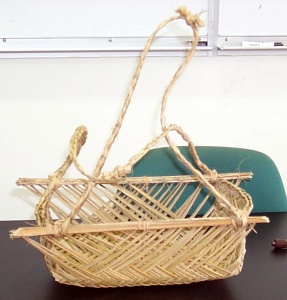
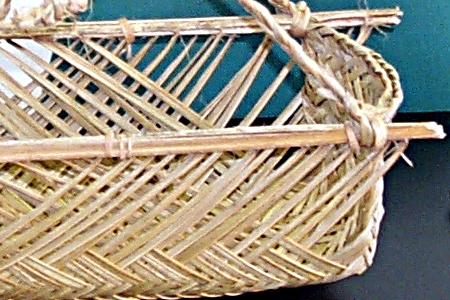
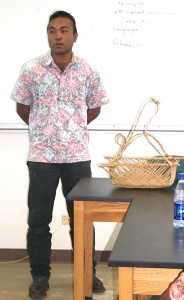
Balkario, from Pohnpei, presents a traditional purse (kopwou), noting that only a single elderly woman in his village of Paies can still make this type of purse. The material is coconut leaves.



Luanne, from Kosrae, presents a traditional coconut leaf plate, ahluh sroacnu. Young Kosraens may also call this a puhlet sroacnu from the English word for plate.
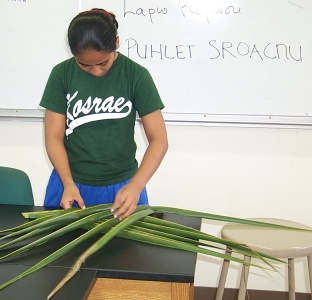
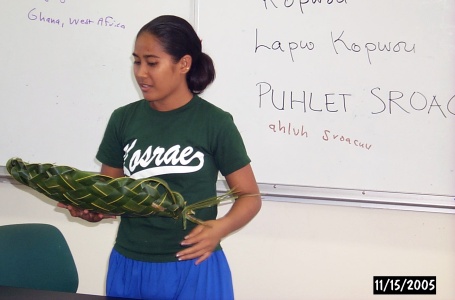
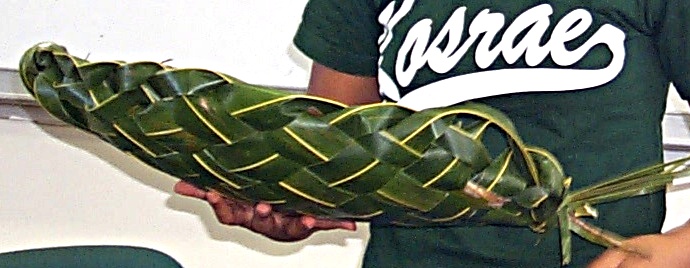
Kimberley, from Yap, presented a series of balls (bat')of stars made from young coconut leaves. The smaller round balls are for juggling, the larger squarish ball is for baseball, and the other shapes are decorative stars (tuuf). Juggling is termed tilo'y or machyoch.
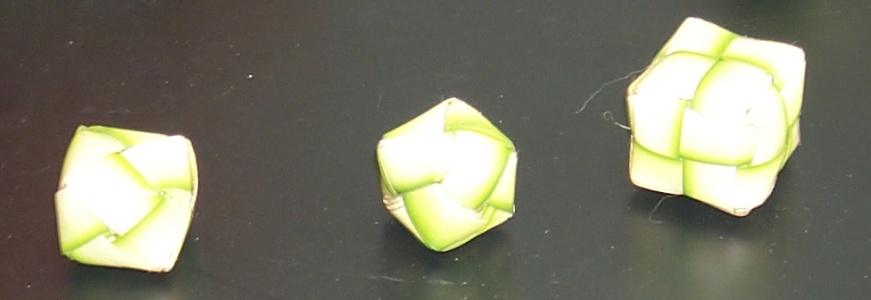
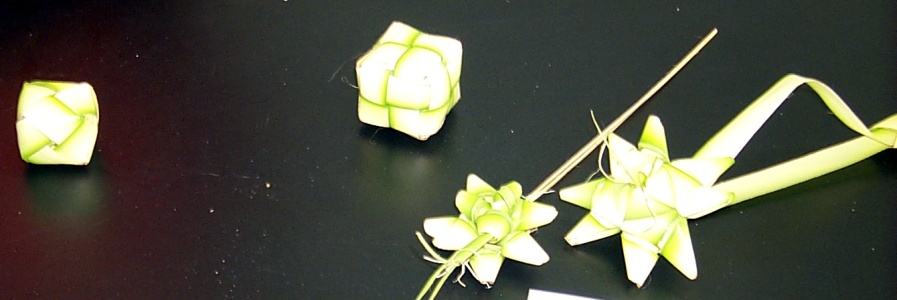
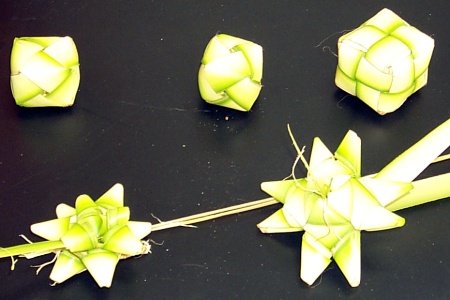
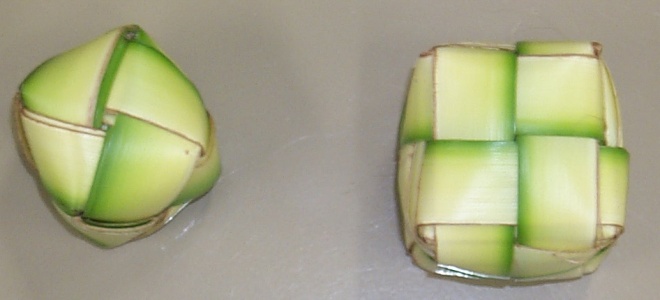
Wayner, of Pohnpei, presented on the breadfruit picking stick called the piled. The piled is made from hibiscus with, at the end, a second piece of stronger wood called the nai. The stem of the breadfruit is slotted between the ihpw (the hibiscus shaft) and the nai, then the stick is twisted (piledo) to cause the nai to break the breadfruit off while retaining the breadfruit. This same tool is a tangwes in Kosrae, ias in Chuuk, and ew' in Yap. The ew', however, is made from bamboo. Ulithi calls this tool iat.
Evangileen presented a hibiscus mwaramwar.
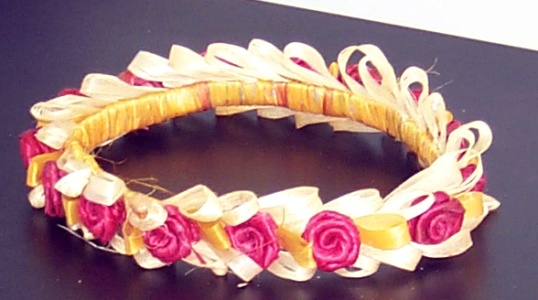
Anastasia, of Yap, presented a Yapese fish basket called a chael. This basket, made only by a mother for a son, a sister for a brother, or a wife for a husband, is used by the man to carry fish. This style of basket is singular in this usage.
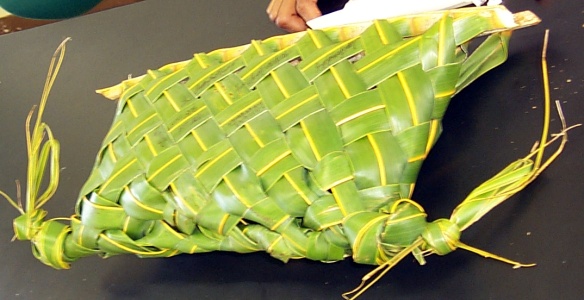
The fnoel, a Yapese food basket, was presented by Valerie on Thursday. The differences are subtle. This basket, also made by women, is for food such as breadfruit.
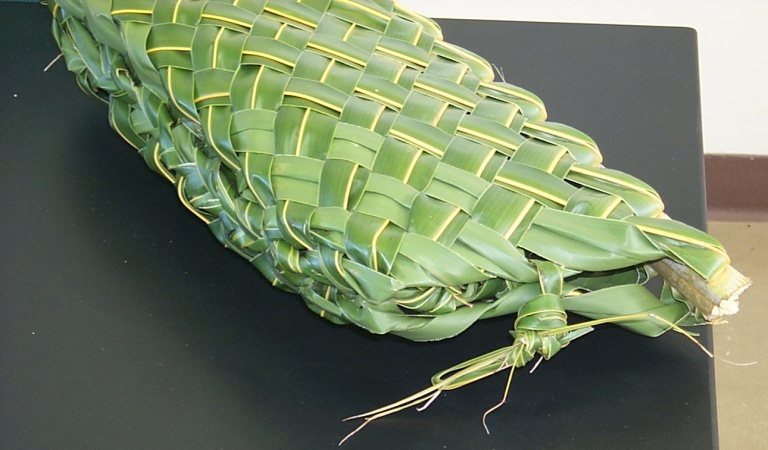
Sophia, of Yap, presented the sitting mat. If meant for sitting, it is termed a kani iy, if for laying out fish then it is called a chiring. The kani iy comes in different sizes, with longer ones used at funerals and meetings. Men tend to use a shorter kani iy. The coconut leaves are left folded over, making the mat flat, smooth, and glossy on both sides.
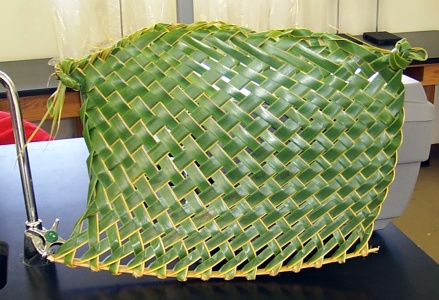
Meicy, of Mortlockese heritage, presented an ivory nut pendant carved from the Pohnpeian ivory nut tree (oahs).
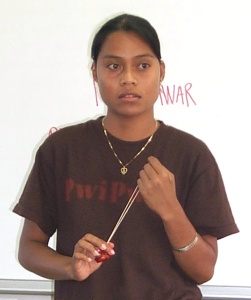
Masako, also of the Mortlocks, presented the local fan, a saipo.
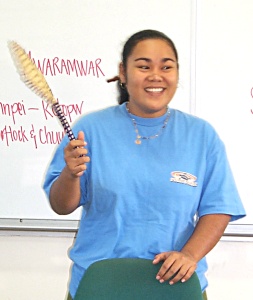
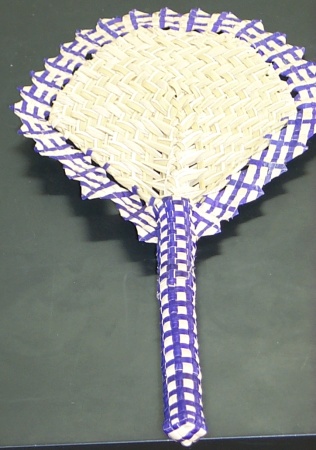
Emmyleen, from Sapwafik, presented the traditional coconut leaf skirt, the kol. The skirt is rather heavy.
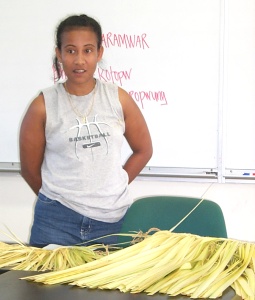
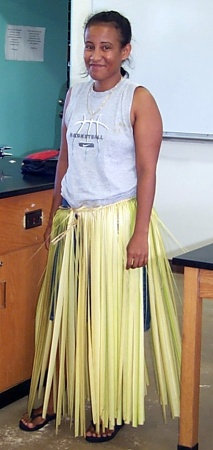
Jayvina, from Chuuk, presented the Chuukese love stick, fenai. No longer in use, in days of yore young men would secretly allow a paramour to feel the stick by day. That night, he would stick the fenai through the wall of her thatch hut and snag her hair. She could feel the stick and know what boy was on the other end. If she wanted to meet that boy, she could slip out of the family hut, otherwise she pushed the stick back through the wall to indicate that she was not interested. With the advent of cement walled homes, this world has been completely lost and now the fenai is a trinket sold only to tourists. This is but a small part of what is a huge sea change in dating and mate finding practices in Micronesia.
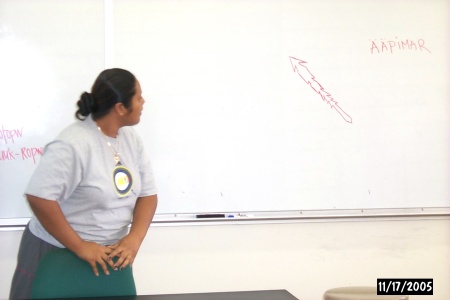
Coconut leaf basket (chük) presented by Ginda of the Mortlocks:
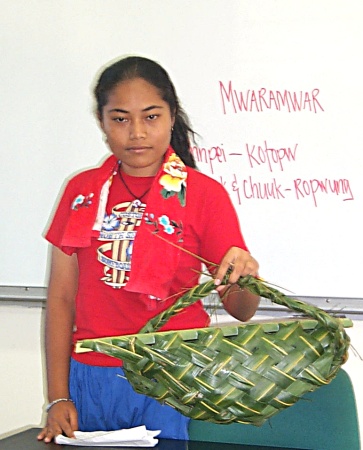
Sepe and Robina presented on the change in Kosraen dresses over the generations. Sepe wore a style from an earlier era. Her blue dress features a high neck line, long sleeves, and ends just above the knees. A crocheted underskirt is visible at the bottom of the dress. The dress is similar to those worn by Kosraen women in the 1960s and 1970s. The cut was typically looser and hid the curves of the body with straight lines. It should be noted that the dress is for a woman slightly smaller than Sepe.
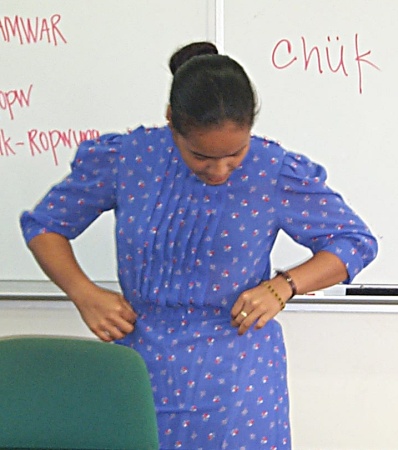
Robina is wearing the latest in Sunday style with a short tufted sleeve, low neck line, and a hemline well below the knees. An underskirt is no longer worn, and the sides are darted to follow the curve of the body.
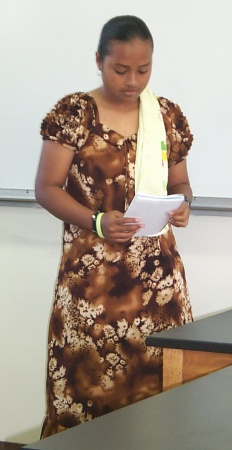
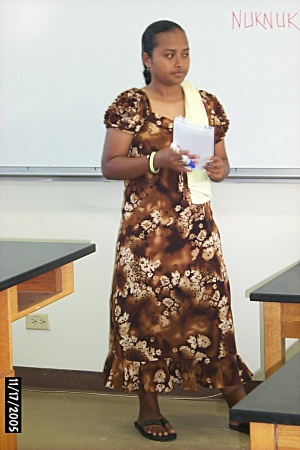
In keeping with the era of their dresses, Sepe has her hair up in a conservative bun while Robina wears her hair more evocatively down.
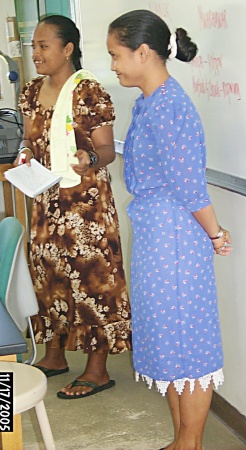
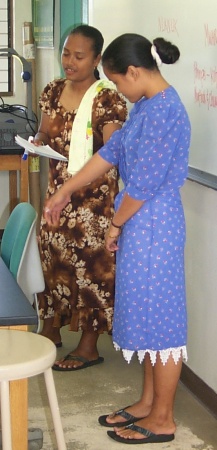
George wears the traditional koahl, the Pohnpeian hibiscus skirt.
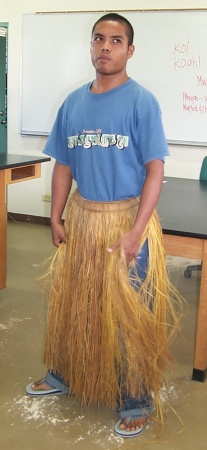
Ethnobotany • Courses • COMFSM